#filter replacement
Text
WHAT ARE BYPASS FILTERS?

A bypass filter, also known as a pressure relief valve, is a very important part of an oil filter. When oil is too thick or the filter is clogged, the valve opens. If the valve doesn’t open then the filter may eventually burst.

Bypass filters are designed to remove fine organic and inorganic particles. It also increases the total volume of oil used. Thus, if you have contamination issues and want to extend operating equipment life, extend lube oil & service intervals, and consider adding bypass filters. We can say that Bypass filtration can be considered another aspect to save money and downtime.
Most of the existing manufacturers use ‘full-flow’ oil filters which are designed to protect the component from large particles but they cannot remove soot, water, or silt. Full-flow filters alone cannot keep oil clean for a long-term period. The fine particles which account for most of the contamination can be removed by the bypass filters.
It is advised to do the homework before buying a bypass filter. Some important factors to consider are:
1) Capture efficiency - The higher the beta ratio, the better will be the capture efficiency. A good beta ratio selection can control the escape of particles through the element. It is just like a good shepherd keeping the flock of sheep in a controlled and organized manner in the field.
2) Pressure/flow - Suitably designed filter element has calculated flow and velocity of oil through its microvoids. It is as important as keeping the water stream in a controlled way for gardening purposes. Else, it may spoil the sole purpose of watering.
3) Dirt Holding Capacity - It is not only necessary to have high capture efficiency but also a good filter element capacity is a must-have to retain the collected contamination. A well-engineered element has dedicated space to imprison the unwanted contaminants.
4) Heating element (to eliminate solid and liquid contaminants) - An elevated temperature helps to dislodge the solid contaminants and accelerates the rate of removal of volatile impurities.
5) Type of filtration media - Filter media varies with grade and type of oil widely. This may be a fine filter paper to absolute and depth filter media.
For more such interesting Articles and Case Studies: Click Here
6) Compatibility of fluid - Not every filter element can be used with any grade of oil. A small mistake in element selection can destroy the element as well as may cause a collapse of the entire system.
7) Surface area for the filtration – The higher surface area will give a lower pressure drop across the filter and also helps to achieve higher flow rates.
8) Compact in size - Reduction of size in regards to the filter elements and housing gives us multiple benefits like space and cost-saving, aesthetic look, better maintainability, low recurring expenditure, etc.
9) Inexpensive to use and install - At the end of every engineering and calculation, economics comes into the picture. It is always suggested to go with optimized design and correct sizing to overcome financial constraints.
We don’t need any additional setup to establish a Bypass filtration system; it can be done within the existing skilled limits. Please note that a bypass filtration system can be of great benefit if installed and maintained appropriately and it helps to prevent post-filtration fugitive contamination ingress into the system.
We will be happy to help you in the entire journey of the right filter selection. Contact - [email protected] or WhatsApp us at +91 7030901267.
#minimac#minimacsystems#filter#filter skid#filter replacement#contact minimac#Lube Oil Filter#hydraulic oil#oil cleaning machine#Lube oil cleaning#hydraulic oil cleaning#FRF#oil flushing#transformer oil cleaning#oil condition monitoring#Fluid Power Equipment#electrostatics lube cleaner#coalser separator#Diesel purification systems#chemical cleaning#technology#varnish removal#oil contamination
2 notes
·
View notes
Text
The Importance of Filter Replacement for Your Gentoo Glass Water Filter Jug

A key aspect of maintaining the effectiveness and longevity of your water filtration system is ensuring the timely replacement of filters. The Gentoo Glass Water Filter Jug from Ecobud is no exception. Regular filter replacement not only guarantees clean, fresh-tasting water but also optimises the performance of your filter jug, ensuring that you continue to derive maximum benefits from your investment.
In this post, we will explore the importance of filter replacement for the Gentoo Glass Water Filter Jug, outlining the consequences of not changing filters as recommended and providing a comprehensive step-by-step guide on filter replacement. We will also share tips for maintaining the quality and lifespan of your filters, helping you stay informed about the best practices for extending the longevity of your filtration system and making the most of your water filter jug.
By understanding the significance of filter replacement and following our guidance, you can consistently ensure the optimal performance of your Gentoo Glass Water Filter Jug and maintain the highest quality of drinking water for you and your family. Staying informed and vigilant about filter replacement will not only contribute to your overall health and well-being but also promote a responsible approach to maintaining your water filtration system.

Understanding the Need for Filter Replacement
Timely filter replacement is crucial for the optimal functioning of the Gentoo Glass Water Filter Jug due to several reasons:
Filter Lifespan: The efficiency of water filters decreases over time as contaminants accumulate on the filter media, making it less effective in removing impurities.
Maintaining Water Quality: Failing to replace the filter as recommended can compromise the quality of the filtered water, potentially exposing you to contaminants that the filter can no longer remove effectively.
Optimal Performance: Regular filter replacement ensures that your Gentoo Glass Water Filter Jug maintains its optimal performance, providing you with consistently clean, great-tasting water.

Consequences of Not Changing Filters as Recommended
Neglecting timely filter replacement can lead to several negative outcomes:
Reduced Filtration Efficiency: Overused filters may be unable to remove contaminants effectively, leading to a decline in water quality and taste.
Clogged Filters: The accumulation of impurities on the filter media may cause it to become clogged, resulting in reduced water flow and increased strain on the filtration system.
Bacterial Growth: Extended filter use beyond the recommended timeframe can encourage bacterial growth.

Step-by-Step Guide to Filter Replacement
To ensure that your Gentoo Glass Water Filter Jug remains efficient and effective, follow these steps to replace the filter:
Purchase the Correct Filter: To maintain optimal performance, it is essential to purchase the specific filter cartridge designed for the Gentoo Glass Water Filter Jug, available at ecobud.com.au.
Remove the Old Filter: Fully remove the filtration system from the jug, and twist off the filter cartridge from the filter holder.
Prepare the New Filter: Unwrap the new filter cartridge and soak it in clean water for approximately 10 minutes, allowing the filter media to saturate fully.
Clean the Jug: Before installing the new filter, take the opportunity to wash the jug and filter holder with warm, soapy water.
Install the New Filter: Be sure there is a seal around the filter cartridge, and insert the new filter cartridge to the inner reservoir filter holder. Ensure it is securely in place. Reassemble the filtration system and place it back in the jug.
Flush the Filter: To remove any loose filter media particles, fill the jug and allow the water to filter through twice, discarding the filtered water after each cycle.
Reset the Filter Replacement Indicator (if applicable): Some models of the Gentoo Glass Water Filter Jug include a filter replacement indicator, which should be reset after every filter change.

Tips for Maintaining Filter Quality and Lifespan
Implement the following best practices to extend the longevity of your filters and maintain the quality of your filtered water:
Stick to the Recommended Replacement Schedule: Keep track of the recommended filter replacement frequency, which is approximately every 3 months or up to 600 litres of water for the Gentoo Glass Water Filter Jug.
Store Filters Properly: Store unused filters in a cool, dry place away from direct sunlight to maintain their effectiveness.
Keep the Jug and Filtration System Clean: Regularly clean the jug and filtration system, paying attention to areas where bacteria or contaminants may accumulate, such as the filter holder and spout.
Use Filtered Water Only for Intended Purposes: Avoid using the Gentoo Glass Water Filter Jug to filter liquids other than water or to store substances that may damage the filter.

Conclusion
By understanding the importance of timely filter replacement and adopting the practices outlined in this article, you can ensure the optimal performance of your Gentoo Glass Water Filter Jug and maintain the highest quality of drinking water. Regular filter replacement not only contributes to your overall health and well-being but also demonstrates a responsible approach to caring for your water filtration system. With a commitment to maintaining your Gentoo Glass Water Filter Jug, you can enjoy the benefits of clean, great-tasting water and a more sustainable lifestyle for years to come.
Ecobud's glass water filter jug is a must-have for anyone looking to maintain a healthy lifestyle while contributing to environmental conservation. If you're looking to invest in a high-quality glass water filter jug that's both healthy and environmentally friendly, look no further than Ecobud. Order yours today and take the first step towards a healthier lifestyle and a cleaner planet!
READ MORE >>
#water filter#healthy living#clean water#water quality#eco friendly#sustainable living#water safety#hydration#home wellness#healthy choices#filter replacement#water health#ecobud#wellness tips#healthy habits#pure water#drink clean#healthy lifestyle#filtered water#water awareness#healthy home#hydrate right#stay hydrated#water matters#eco living#clean drinking water#water is life#water education#mindful hydration#home health tips
0 notes
Text
Ensure Kitchen Efficiency with Expert Exhaust Hood Repair by Red Eagle Protection Encino

Maintaining your kitchen exhaust hood is essential for a clean and safe cooking environment. Common issues like noisy operation, reduced airflow, and malfunctioning lights can disrupt your kitchen’s efficiency. At Red Eagle Protection Encino, we specialize in diagnosing and repairing these problems. Our expert team ensures your exhaust hood runs smoothly, from tightening loose screws to replacing faulty motors and cleaning grease filters. Regular maintenance not only extends the life of your equipment but also enhances kitchen safety. Contact Red Eagle Protection Encino today for reliable and professional kitchen hood repair services.
Red Eagle Fire Protection Encino
Encino, CA
(213)698-3894
https://redeaglerestfirehood.com/encino-ca/
#Kitchen Hood Repair#Exhaust Hood Maintenance#Hood Cleaning#Fan Motor Fix#Grease Trap Cleaning#Duct Cleaning#Filter Replacement#Electrical Repairs#Improve Ventilation#Kitchen Safety#Hood Inspection#Restaurant Maintenance#Hood Upgrade#Clean Kitchen Air#Efficient Exhaust
0 notes
Text
Ice machines repair in Peoria, Arizona, is a typical service many hospitality businesses need. However, did you know that investing in preventative maintenance can significantly extend the lifespan of your ice machine? It’s true! Regular maintenance ensures your machine operates efficiently and helps avoid costly repairs down the line.
0 notes
Text
When it comes to maintaining a comfortable indoor environment and understanding the importance of reliable air conditioning services, a malfunctioning thermostat can quickly turn a cozy home into an uncomfortable space in the sweltering summer heat. Timely air conditioning services in Brooklyn, New York, can alleviate these concerns and ensure your HVAC system operates at its best.
0 notes
Text
Keep Your Air Handler in Prime Condition: Simple Maintenance Guide for Optimal Performance
As an HVAC guru, I understand the importance of keeping your air handler in tip-top shape for maximum performance and energy-saving awesomeness. Think of the air handler as the superhero of your HVAC system, tirelessly circulating perfectly conditioned air throughout your humble abode or magnificent edifice.
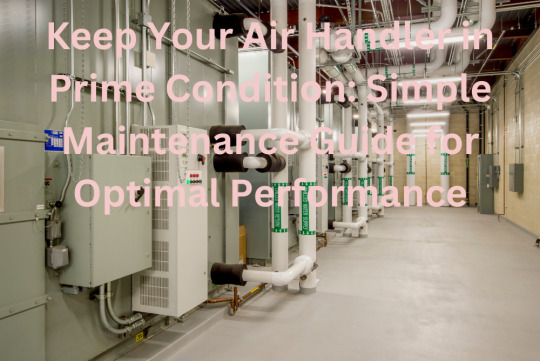
Neglecting its maintenance can lead to reduced efficiency, higher energy bills, and even system breakdowns. However, with a simple maintenance routine, you can keep your air handler in prime condition. Let's dive into the essential steps you need to follow.
Learn how to keep your air handler in prime condition with my simple maintenance guide.
Learn how to keep your air handler in prime condition with my simple maintenance guide. Optimize its performance, improve energy efficiency, and prevent breakdowns with these easy steps. Ensure a comfortable indoor environment with proper air handler care.
Regular Filter Replacement
One of your air handler's most vital maintenance tasks is regularly replacing the air filters. Clogged filters restrict airflow, reducing the system's efficiency and putting strain on the blower motor. Aim to replace disposable filters every one to three months or clean washable filters as the manufacturer recommends. This simple step will improve indoor air quality and ensure proper airflow.
Clear the Surrounding Area
The area around your air handler should be kept clean and free from obstructions. Remove any objects, debris, or clutter that may impede airflow to the unit. Adequate airflow is crucial for the efficient operation of your air handler, and obstructions can lead to overheating or reduced performance.
Inspect and Clean Coils
Dirty coils can really put a damper on your air handler's efficiency. But fear not! You have the power to take action and keep those coils clean! Make it a habit to regularly inspect and clean your coils for maximum heat exchange. Grab a soft brush or vacuum cleaner and gently rid them of any debris. And if things get a little out of hand, don't hesitate to bring in the pros for a deep cleaning that will restore peak performance. Your air handler will shower you with gratitude!
Check and Lubricate Moving Parts
Give your air handler some love by thoroughly inspecting its moving parts. Look out for any signs of wear and tear on the blower motor and fan, and make sure to give them a good lubrication session following the manufacturer's guidelines. Keeping these parts well-lubricated will reduce friction and ensure your air handler stays super efficient and lasts for years.
Verify Condensate Drainage
Air handlers often generate condensation as they cool or dehumidify the air. Ensure that the condensate drainage system is clear and functioning correctly. A clogged drain can lead to water leaks and potential water damage. Regularly check the condensate drain and clear any blockages to prevent issues.
Schedule Professional Maintenance
Don't wait for your HVAC system to give up on you! Give it the VIP treatment it deserves with professional maintenance. Only skilled technicians will work their magic, performing thorough inspections, catching sneaky issues, and fine-tuning your system to perfection. Say goodbye to breakdowns and hello to worry-free comfort all year round.
Monitor Performance and Energy Consumption
Keep an eye on your air handler's performance and energy consumption. Unusual noises, reduced airflow, or sudden spikes in energy bills can be signs of problems. Address any concerns promptly by consulting an HVAC professional to prevent further damage or inefficiency.
Following these simple maintenance steps ensures that your air handler operates at its best, providing optimal comfort and energy efficiency throughout your space. A well-maintained air handler improves your HVAC system's performance and extends its lifespan, saving you money in the long run. Remember, when it comes to HVAC maintenance, prevention is key.
Contact a qualified HVAC professional if you have any doubts or encounter complex issues. They have the knowledge and experience to keep your air handler and entire HVAC system in prime condition, delivering reliable comfort year-round.
#air handler#maintenance#guide#optimal#performance#HVAC Tips#maximum performance#energy-saving#filter replacement#clean coils#lubricate#Condensate Drainage#professional maintenance#HVAC system#HVACDuct
0 notes
Text


+ bonus Lingling honest reaction:

My judgement is right after all. If her brother is like this, then Baijie must be even kinder and more compassionate than you.
The Spirealm 致命游戏 (2024) | Ep. 27
#the spirealm#致命游戏#kaleidoscope of death#ruan nanzhu#ling jiushi#li dongyuan#xia zhiguang#huang junjie#liu xiaobei#cdrama#cdramasource#kodedit#userhanyi#*gifs:mine#huge fan of whatever is going on between these three QUITE HONESTLY#the way lingling's caught somewhere between slightly amused and absolutely disgusted with them#translation notes: in chinese nanzhu actually says “your little mouth is so sweet” but it basically means you're a sweet talker#it is also a lot less sexually charged in chinese than the literal translation is in english lol#i've given up on coloring i'm just replacing the garish yellow filter with a slightly less garish red one
144 notes
·
View notes
Text

vapor trails
#thinking about how most of cybertron probably smokes heavily bc they just put it through their (replaceable) filters#and it causes negligible damage unless you cant afford a replacement#yk what not going into the robot drug class war rn#deadlock#drift#idw drift#digital art#fanart#transformers#in 1 sketch per day mode
558 notes
·
View notes
Photo

took a break from organising life stuff for inferno <3 <3 while doing firefighter outfit research i saw a lot of concepts about ai/3D mapping being used to help firefighters help navigate low/no visibility situations. i love that alot. i also love the idea of red alert hijacking inferno’s headset to Observe Her Wife
#inferno#humanformers#maccadam#transformers#I READ A REALLY CUTE FIC FOR RED ALERT/INFERO#inferno. anyway it was a love at first sight collection and it had red alert guiding a disorientated inferno out of a building WAA IT WAS SO#CUTE#i lost it after i read it but if anyone knows which one i'm talking about pls @ me the link#firefighter inferno not the most inventive but firefighters absolutely slap so .#i imagine as well firefighters in cyberpunk have to deal with a lot of toxic materials#(due to lack of material usage regulations!!!) but anyway inferno has replacement lungs. but better to breathe in extra filtered air#with a mask and synthetic lungs B)
496 notes
·
View notes
Text
Idk who else needs to hear this but

remember to change your CPAP filter!
#cpap#sleep apnea#Insomnia#Reminders#I just changed mine out TWO WEEKS LATE and omg immediately#breathing with it on feels so much nicer#Also I replaced it with a cut out bit of n95 mask bc I'm behind on medical stuff and ran out of filters#But honestly this might work better
138 notes
·
View notes
Text






Img ID: a series of screenshots from Splatoon 3 grand festival event, taken in front of the concert set ups as if the camera person was a member in the crowd. Each shot involves one or more preforming idols blocked by a raised hand.
Realistic grand festival shots. Also known as POV: You're at a concert but you're short and the people in front of you keep blocking all the good shots :(
#styx talks#Splatoon 3#grand fest splatoon#Considered trimming them to be in vertical to really get that ''taken on a shaky phone'' effect#But I thought just tilting it and having the flushed colors filter was good enough#I don't know how well I can do a blurry Pic and still make it understandable but tmmr I wanna do some more that are like#''pov you got concert tickets for the very back row and you're trying to get pictures'' and they're just. Incredibly zoomed in and blurry#Also added img id's. Forgot to do that on initial posting#Edit: Replaced the ones that I forgot to turn the dates off for lmao
18 notes
·
View notes
Text
Control System Of Turbine - Failure & Maintenance
Control System
The turbine control system describes the control over the opening of control valves corresponding to demand signals, and steam flows into the turbine with the help of a governing system that facilitates the operation of the turbo set in an interconnected grid system.
Governing system is responsible for various function such as speed & load control functions, the start-up/shut-down controls, the over-speed control, turbine stress calculation, to control the initial run-up and synchronization of the Unit, to assists in matching the power generated to that demanded by responding to system frequency changes, to regulate the steam control valves position (and hence the load generated)in response to signal from the operator or from the load dispatch Centre, to restrict the speed rise within acceptable limits should the unit get disconnected (islanding) from the lgridoad and some protective trip functions.
With continuous research and developments in modern turbine technology, the following three types of governing system are mainly available nowadays in power plants:
1. Hydraulic: Hydraulic governors have only a speed controller loop. Machine speed is measured and indicated as a primary oil measure. Speed transducer is a centrifugal pump whose discharge pressure is a function of machine speed. This signal is sent to a hydraulic converter, to generate a high-power hydraulic signal for the operation of different control valves. The range of speed control is 2790-3210 rpm. Its speed regulation range (droop)is 7%. HG (typically) cannot be isolated mechanically like EHG.
2. Electrohydraulic: This consists of three control loop speed, load, and pressure. Speed Electronic Transducer is used for measuring the machine speed. This signal is processed electronically and then sent to an Electrohydraulic converter (E-H) for converting the electronic signals into proportional hydraulic signals (I-P converter) for the operation of control valves. It gives a faster response and precise frequency control. The range of speed control is wider (0 – 3210 rpm). Its speed regulation(droop) is 5%.EHG can be mechanically isolated by closing the secondary oil line from the local.
Major devices/component of the above Governing system are:
Remote trip solenoid
Turbine trip gear (main trip valve)
Starting and load limiting devices
Speeder gear
Auxiliary follow-up piston
Follow up piston
Hydraulic amplifier
Electro-Hydraulic convertor
Sequence trimming device
Solenoid for load shedding relay
Block Diagram of EH Governing system
Follow our page and stay updated about Lubrication Reliability - Minimac Systems Pvt Ltd
Oil Lube Flow In The Circuit:
Control Oil: Oil is taken from the AOP/MOP discharge header for the governing system.
Trip/Aux Trip Oil: These two oil circuits are established through main trip valves under reset condition.
Start-Up/Aux Start-Up Oil: These two oil circuits are established to peak pressure through starting device at 0% position and pressure started reducing when the position of the starting device is raised.
Aux Secondary Oil: This oil circuit is the output of the hydraulic governor and input to the hydraulic converter.
Secondary Oil: Output to Hydraulic and Electrohydraulic converter.
Test Oil: This oil circuit is established to test over speed trip device when the turbine is running at rated speed.
Remote trip Solenoid Valves: These are two in nos. and when any turbine trip gets initiated, the solenoids get energized& control oil gets drained through the valves and trips the MTV.
Main Trip Valve: These are two in nos. and called the main trip gear. All the turbine tripping take place through this device under non-trip condition establishes trip & aux trip oil and used for resetting/opening the stop valves and producing HP/IP secondary oil.
Starting device: this device is used for resetting and opening the stop valves and, main trip valves &hydraulic trip devices. this device either be operated manually by handwheel or from remote (MCR) through a motorized actuator.
Speeder gear: This device in combination with starting device forms a hydraulic governor and provides an input hydraulic signal to the hydraulic converter. this device either be operated manually by hand wheel or from remote (MCR) through a motorized actuator.
Hydraulic/Electro-hydraulic converter: amplifies & converts hydraulic /electrical signals to hydraulic signals (HP/IP secondary oil) for the operation of the HP/IP control valve.
Hydraulic trip devices: These devices provide mandatory protections of the turbine by draining aux trip oil. these devices are reset by aux start-up oil.
3.Digital Electrohydraulic: The main function of the DEH control system is to control before starting up (auto judging very hot, hot, warm or cold state), auto-adjusting servo system static relation, turbine latching, speed and load control, protection, supervising and communication. It consists of electronic parts and EH system which controls the speed/load through controlling the openness of all valves. The feature of special controlling on IP start-up mode (HP casing switchover and isolating of HP casing) can perform quick start-up and stable running for a long time with low load at all phases.
This is a modern high-pressure (110 to 180 bar) governing system.
Let’s know how it works. The electrical measuring and processing of signals offer advantages such as flexibility, dynamic stability and simple representation of the complicated functional relationship. The processed electrical signal is introduced at a suitable point in the hydraulic circuit through the electro-hydraulic converter. The hydraulic controls provide the advantages of continuous control of large positioning forces for control valves. The integration of electrical and hydraulic system offers the following advantages:
Exact load frequency droop with high sensitivity
Reliable operation in case of isolation from power grids
Dependable control during load rejection
Low transient and low steady-state speed deviations under all operational conditions
Excellent operational reliability and dependability
Safe operation of the turbo-set in conjunction with the Turbine Stress Evaluator (TSE)/Controller (TSC)
Operating Method Of DEH Governing:
The stop valve for HP/IP will open by the HP fire-resistant oil when the dump valve is closed
The dump valve will close when the trip oil is under pressure
The trip oil is under pressure when the trip solenoid (5,6,7,8 YV placed on the trip block) valve is in a de-energized position and the HP Trip oil header is under pressure
The oil will enter the bottom of the piston through the isolating valve (Supply sol.). Thus, the stop valve opens slowly against the spring force.
In case of a trip, the trip solenoid valves are energized and AST valves de-energize and HP trip oil header is de-pressurized and thus dump valve open to connect the bottom and top ports to drain the oil to LP accumulators
The valve quickly closes due to spring force
After the unit is reset and HP trip oil is formed
The trip solenoid valve is de-energized conditions will give pressurized oil to the dump valve to keep it closed
Pressurized Oil is up to the EH servo valve
The EH Servo valve based on the DEH valve command signal and valve position feedback signal from LVDT will connect the HP Fire resistant oil to the lower part of the piston or lower port to the drain till the matching is achieved
In the case of Trip, the dump valve opens due to energization of the trip solenoid or depressurization of the HP trip fluid header. The dump valve opening leads to the control valve quick closing due to spring force.
Access more articles, join our network! Click Here
Type Of Control System Loops:
The EHG function consists of mainly following control loops:
1.Speed control loop: In this loop, the speed controller essentially compares the speed reference generated by the speed reference limiter circuit and the actual speed of the turbine and accordingly provides an output for the valve lift controller. This loop only determines the control valve position to adjust turbine speed at setting value before the generator is paralleled to the power system. 2.Power control loop: The task performed in the speed control loop is then transferred to the power control loop or the MSP control loop after synchronization with the system. The steam turbine shall be controlled on this MW-control mode normally. In the event of a drop of grid frequency, the governor valves shall open instantaneously to provide frequency support in the form of additional MW. When the main steam pressure (MSP) control mode is an operation, this MW-controller is tracking to the main steam pressure (MSP) controller. 3.Turbine inlet steam pressure (MSP) control loop: MSP mode (Turbine Follow mode) of operation results in the governing system modulating the steam flow to regulate the steam pressure at a fixed value. The control system shall switch automatically to this mode when faults occur which prevent normal control of the boiler. MSP mode will take over following a drop-in steam pressure of 10% or an increase in pressure of 3%. It shall be possible to manually switch to this mode. When the power control mode is an operation, this steam pressure controller is tracking to the power controller. 4.Steam pressure Limiter control loop: The pressure limiter shall override the governor and progressively reduce the steam flow to the turbine as the steam pressure before the HP steam turbine governing valves drops below a predetermined value in order to limit serve drops in steam temperature. 5.Condenser Vacuum Limiter control loop: This limiting controller shall override the governor and progressively reduce the steam flow to the turbine as the condenser vacuum falls over a predetermined range in an effort to maintain the condenser vacuum at this value. The setting shall be adjustable. It shall be possible to override the device during vacuum raising and it shall not come into operation below 1000 rpm. 6.Control valve (CV) position control loop: An output from the above loops is given to the CV position control loop as its setting. Consequently, it adjusts the CV position in accordance with its characteristic curves respectively. This portion outputs the opening command to the Electro-hydraulic (E/H) converter mounted on each CV separately. Due to each E/H converter having two magnet coils, two separate signal (±10V) lines are connected to them.
Valve Comprised In The EHG Circuit:
Turbine speed control, load control, load shedding relay control and emergency control are carried out by open and close action of each:
Main Steam Stop Valve (MSSV)
Main Steam Control Valve (MSCV)
Reheat Steam Stop Valve (RSSV)
Reheat Steam Control Valve (RSCV)
Most of the failure-to-trip conditions can be attributed to five basic problems.
Steam deposits on the valve stem (or stems)
Lubrication deposits (i.e., soaps, dirt, detergents, etc.) in the top works of the valve exposed to the elements
Mechanical failures of the valve resulting from bent stems, either in the valve proper or the upper works, damaged split couplings, etc., all within about a 6" area near the centre of the valve mechanism
Galling of the piston in the hydraulic latch cylinder
Jamming of the screw spindle in the larger cylinder-type valve design due to forcing by operations personnel
Connect with our experts for Oil Analysis & Condition Monitoring - Click Here
Servo And Proportional Control Valves:
Failures of control valves have resulted in a very expensive loss of production and downtime to many energy generation companies. This led to the increasing use of servo and proportional control valves in modern hydraulic control systems. These devices are inherently at the critical stage of controlling the generating process and quality of the end product.
The most critical factor of their failures is the contamination of the hydraulic fluid with regard to cleanliness and chemical composition like water content and various forms of break down that can occur due to chemical contamination, excessive heat or working of the fluid, inappropriate filters for the valve etc.
To achieve high reliability and asset life for a longer time, it is important to closely evaluate the design of filtration and its effects, components included and circuit layout to achieve the optimum solution. The key system elements are Servo valves and proportional valves, Pumps and motors and Ancillary valves and components.
The types of failure on the basis of contamination can be broadly classified into:
Short term failure: This type of failure comes with no warning which results in an unplanned shutdown of the plant, catastrophic for equipment, production loss. The main causes are jamming of the spool or plugging of the orifice.
Particle Jamming: In this mechanism, contaminant gets lodge in the fine clearances between the spool and body, the particles became wedged in the spool blocking control orifices to cause a ‘hard over’ condition or loss of control pressure. To solve this type of problems by filtration, the size of clearances and driving forces to overcome particles should be considered. This causes permanent damage to control lands of the valve which means expensive repair or replacement with a new one
Silting: Silting refer to a phenomenon where a spool is being held in a fixed position with high pressure across the lands which results in a gradual build-up of fine ‘silt’ particles that can lock the spool within 5-10 minutes. poppet type solenoid valves are used in safety circuits where long stand times can be involved. A conventional solenoid (or the return spring) will not move the spool after 3-5 minutes
Long term failure: This type of failure directly impacts system accuracy and repeatability. It results from the gradual build-up of other ‘varnish’ or silt type contaminant that degrades the control qualities of the valve such as threshold and hysteresis, wear/erosion of valve parts. Long term effects cannot be eliminated, however, by proper design, it is possible to maximise the useful life of the valve before service or repair is required. This requires the effective application of silt level filtration.
Valve Design:
Control system performance, the filtration requirements and likely contamination sensitivity are dependent on how the best valve design is selected. Design goals should be balanced with component details, component costs and overall system costs. A good understanding of how and why the valve works will provide maximum benefits to the overall design solution. There are three principal areas to be considered for the best designing of a valve:
Internal forces: Understanding the forces within the valve that provide for correct operation and those that resist operation, is most valuable for understanding optimal filtration requirements. Forces determine both short term and long-term performance for contamination sensitivity and threshold/resolution.
Spool position control: For both servo valves and proportional valves the spool is capable of being positioned anywhere over its total designed stroke. How the spool is moved and held in that position will have a direct influence on the cost of manufacture, system accuracy and contamination sensitivity. Three methods used are
Open-loop or non-feedback
Mechanical feedback (MFB)
Electrical feedback (EFB)
Design tolerances: Finer tolerances will be more susceptible to wear and the potential for particle jamming. They will be an important factor for the evaluation of either servo valves or proportional valves with regard to filtration design. For both short and long term functionalities below are few manufacturing objectives such as:
Nozzle diameters and exit clearances
Spool diametral clearance
Spool travel - from 0.250mm for high-performance servo valves to 5-10mm for proportional valves. A shorter stroke means faster response, but finer manufacturing tolerances.
Spool control land overlap - which ranges from 10-20% overlap proportional valves to ‘axis cut’ (zero overlaps) servo valves which require special protection of the lands to maintain performance. Zero overlap valves are used in the pilot section of some proportional valves so that protection requirements can be similar for parts of servo valves and proportional valves.
Control Oil - Fire Resistant Fluid (FRF):
A fire-resistant control fluid (FRF) is used in control and governing systems. The use of fire-resistant control fluid for turbine control and protection systems reduces the risk of fire. This is due to the higher ignition temperature (compared to mineral oil) in case of leaks.
It shall not cause corrosion to Steel, Copper and its alloys, Zinc, Tin or Aluminium (compatibility to be checked)
It shall be continuously regenerated with Fuller’s earth, ICB resins or an equivalent regeneration agent
It must not cause any erosion or corrosion on the edges of the control elements
It must be shear-stable. It should not contain any viscosity index improver
FRF leaking from the system, if any, must not ignite or burn in contact with hot surfaces (up to 550 degrees C)
It must be capable of withstanding continuous operating temperatures of 75 °C without physical or chemical degradation
It must be miscible with traces (max. 3 % by vol.) of TXP of another brand (without deterioration)
The air release of the FRF should not deteriorate in presence of Fluoroelastomer seals and packing used in the FRF system
It must be free of ortho-cresol compounds
It must not pose a safety or health hazard to the persons working with it, provided that the requisite hygiene regulations are observed
Contamination In FRF/Degradation Of Phosphate Ester
Though Phosphate ester fluid is designed for the long life of service of around 20 years if maintained properly, However, contamination or abuse in the oil because of poorly lubrication practices can degrade the oil life and reliability of the machine. Fluid degradation results in sticking valves, eroded servo valves, plugged filters and/or blocked servo valve strainers. The major contaminant or factor of oil degradation are described below:
Water Contamination
This is the most common and dangerous contaminant which frequently dictates the service life of FRF fluid. Phosphate ester has the tendency to hydrolyze which means breaking down into acid and alcohol and this process accelerates with increasing temperature and is catalyzed by the presence of strong acids and some metals.
Acid formation
Uncontrolled generation of acidic products is harmful to the life and performance of phosphate esters. strong acids are also chemically reactive and can form metal soaps or salts which adversely affect foaming and volume resistivity, the latter being used to assess the potential for servo-valve erosion. This soaps precipitates in servo valves and cause stickiness.
Lowering of Resistivity
Resistivity is a critical performance indicator for phosphate ester fluid quality. Low resistivity values are associated with electrokinetic wear, a very common failure mechanism of servo (MOOG) valves.
Solid Contamination
This particulate contamination is responsible for fluid darkening and is generally produced from micro-dieseling, which is a type of high-temperature fluid breakdown caused by air release issues. Solid contaminants of more than (>4) micron are measured by ISO4460 but less than (4) microns are not being detected. On investigation, 90% of total solid contamination in EHC fluids is below 4 microns which results in plugged filters, blocked servo valve strainers.
Oxidation degradation
Oxidation the most dangerous process which occurs due to contamination gives output in the form of heat. Oxidative degradation results in the production of a range of strong and weak acids and from very low molecular weight hydrocarbons that may plate out as varnish to higher molecular weight hydrocarbons or polyphosphates present as sludge that can increase fluid viscosity and reduce resistivity while blocking filters and causing valve sticking. External sources such as a steam line, hot/molten metal or a welding torch located close to the hydraulic line provide heat to the fluid. The difference between internal ‘hot spots’ is that it occurs when the fluid is in circulation (except for the fluid being heated up in the tank) and external heat sources occur when the fluid is static.
Aeration (Thermal Stability and Pyrolysis)
The presence of a small amount of dissolved oxygen will result in degradation at lower temperatures - particularly in the presence of metals - and apparent changes in the physical/chemical properties of the fluid may be due to oxidation rather than pure thermal breakdown.
Maintenance Of FRF Fluid:
The fluid is pressurized, subjected to elevated temperatures, flows through fine clearances and is exposed to contaminants including water, dirt and air. Its maintenance should be focused on Keeping the fluid dry, clean and purified, checking material compatibility issues and employ regular fluid condition monitoring, following the guidelines for handling control fluid and for treatment of control fluid systems, Preservative Agents in Control Fluid System, precautions to Ensure Compatibility of the Control Fluid with other Materials, the procedure for sampling and analysis programs. Below is a chart summing up the maintenance properties:
Purification:
Ion Exchange System
Ion exchange resins have become a preferred form of treatment for fire-resistant fluids used in EHC systems. This treatment has overcome the practice of the fuller’s earth to control acidity generation in a "synthetic" fluid. Weak Base Anionic (WBA) resin in the hydroxide form could quickly reduce the acidity while a strong acid cationic resin (SAC) would, surprisingly, reduce the metal soap content. In order to reduce the amount of water released by the resins, they were dried at 80°C to a level of ~5% before use as a mixture in the existing filter housing. Over a period of about 1-2 months, the properties of the fluid returned to close to those of the new fluid. The below table shows function of commercially available type resin:
The followings points should be considered for the sampling of FRF oil:
Always perform sampling at the same location directly from the system
Recirculate the fire-resistant fluid long enough prior to sampling to avoid settling and give a homogeneous sample
Always perform sampling while the FRF system is in operation
Flush the sampling point prior to sampling by draining about 10 litres of fire-resistant fluid into a clean receptacle; return this into the system after sampling
Allow about 10 litres of fire-resistant fluid to pass through the sampling point before performing sampling by filling the fire-resistant fluid directly into the cleaned ground-glass flask
Do not use aids such as syringes or beakers
Always put identification-mark on the specimens uniquely and durably
Complete the sampling records and send them to the analyzing laboratory together with the FRF sample
Now we are showcasing our solutions and how they helped companies to achieve reliability in turbine maintenance, uptime in maintenance goals and uninterrupted power generation:
Check out the FRF Reconditioning System: Click Here
Minimac's Case Studies Of Reconditioning Of FRF
Read in detail - Article
Read the full Article
Conclusion:
The performance of Hydraulic system plays a vital role in the power generation and for its high-performance many factors must be considered importantly like understanding the valve design, setting & maintaining cleanliness objective, regular monitoring, the adaption of effective purification or filtration methods, monitoring of filter quality and replacement elements etc. Good filtration will always give the lowest machine running cost and greatest reliability for the end-user of hydraulic systems. Below are the major benefits of reconditioning of oil:
Extend oil life
Increased machine reliability
Reduced environmental contamination
Cost-saving on oils replacement
Time and effort saved for oil change out
Decreased waste disposal cost
Low carbon emission
Sustainable development
Call +91 7030901267 & speak to our Technical Experts and save Maintenance Cost.
Author: Mr Yogesh Kumar is a Mechanical Engineer with vast working experience of 11 years in Power plants. He has completed PGDC in Thermal Power Plant Engineering from NPTI. He is a certified Machinery Lubrication Analysis (MLA II) from the International Council of Machinery Lubrication (ICML), Vibration Analyst Level II from MOBIUS Australia, ISNT certified NDT Level II professional in RT, UT, DPT, MPI, BOE (Boiler Operation Engineer) Certification.
Co-Author: Ms Preeti Prasad is a Chemical Engineer with working experience in Refinery and various other sectors in connection with Lubrication Consultancy. She is a certified Machinery Lubrication Technician (MTL I) from the International Council of Machinery Lubrication (ICML).
Reference Taken:
Contamination Control - A Hydraulic OEM Perspective: Workshop on Total Contamination Control Centre for Machine Condition Monitoring Monash University, August 1997.
ASTM Paper on IX treatment, Whitepapers on Phosphate Ester from EPT clean
National Power Training Institute
Other documents from Scribd.com
#frf condition systems#frf#oil flushing#minimac systems#power#minimac#hydraulic oil#lube oil filter#oil & gas#contamination#hydraulic oil filter#transformation oil purification#coalser separator#lube oil flushing#hydraulic oil machine#hydraulic oil cleaning#tan reduction#filter replacement#oil filter systems#oil filters#oil filteration#oil filter machine#oil dehydration systems#oil dehyration#frf condition monitiring#electrostatics lube cleaner#diesel oil purification#diesel purification#transformer oil cleaning#transformer oil filtration
0 notes
Text

typical arch nemesis interaction
#charli.png#yellow jacket#honey badger#superhero oc#hero oc#supervillain oc#villain oc#character design#original character#ocs#GAY!!!!!!!!!!!!!!!!!!!!!!!!!!!!!!!!!!!!!!!!!!!!!!!!!!!!!!!!!.#edit: pink filter supremacy. replacing it with this version :]
165 notes
·
View notes
Text
changed my oil today and was so so brave about it. please clap
#AND the oil filter AND the engine air filter#also need to replace the coolant and maybe the o2 sensor :')
18 notes
·
View notes
Text
So, Pinterest decided to "crack down on p*d*philia" last month... while I certainly hope they were able to eliminate child abuse, the general effects were about what you'd expect. Here are some of my favorite "violations:"


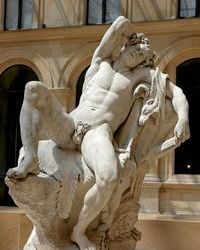


The first one is a manifesto all on its own.
Another affirmation that "action against p*d*philia" will always be used as a cover story for homophobia and censorship of queer love. On top of the misogyny, the censorship of art depicting the human form, and the censorship of anti-nazi. Disappointing.
Meanwhile, they're perfectly happy with promoting Terfs. Here are some Pins they've reviewed as just fine:
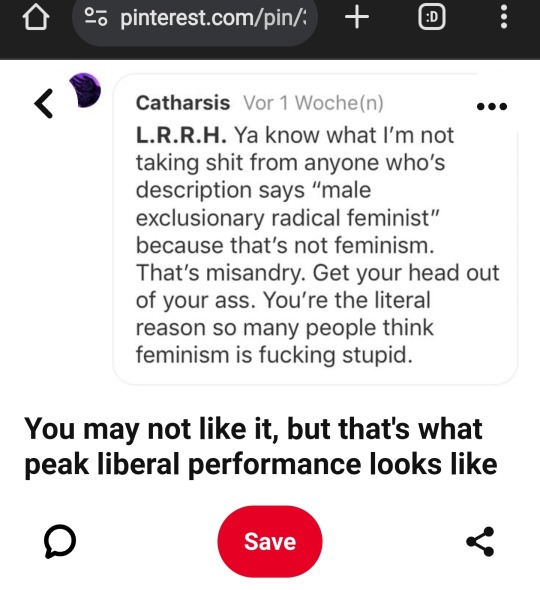


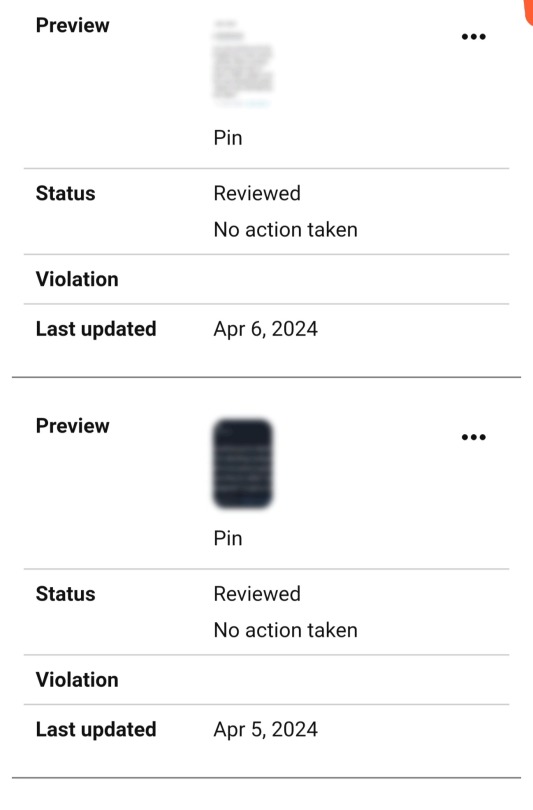
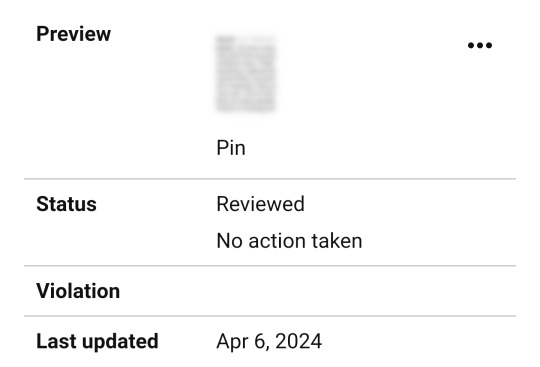
Nothing says "feminism" like shitting on everyone who isn't a cis white woman, amirite?
#terf ass website#Pinterest has such awful content filters it's incredible#Second only to Twitter#Another example of the tech industry censoring humanity#censorship#Homophobia#Misogyny#Anti nazi#big tech#Which of course they'll replace with a flood of machine generated images#and Facebook screenshots for the Pinterest mommies.#pinterest#monopoly#Big tech is making disxrimination a law#Transphobia#Fuck terfs#transmisogny tw#transmisandry#transmisogny
18 notes
·
View notes
Text
In the heart of Brooklyn, the sweltering summer heat or the biting winter chill can make life uncomfortable at best and unbearable at worst. Thankfully, air conditioning services in Brooklyn, New York, do more than keep your business premises climate-controlled. They embody the provision of a necessary comfort that supports productivity, be it at home or business.
0 notes